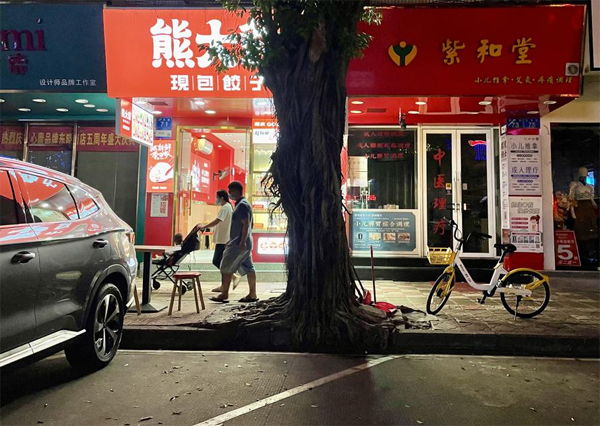Some Guangzhou districts begin reopening after no new cases reported

Residents wearing masks walk on a street in Haizhu district of Guangzhou, capital of Guangdong province, Oct 30, 2022. [Photo by Qiu Quanlin/chinadaily.com.cn]
Offline classes for students in Huadu district of Guangzhou, capital of Guangdong province, will resume on Friday, after the district reported no new COVID-19 infections for seven consecutive days, according to local health authorities.
Moreover, classes for students in some areas and the operation of a garment center, which had been under closed-loop management in Tianhe district, will also resume on Friday after no new cases were reported for the same length of time.
"However, it will take a certain period to completely control the latest round of COVID-19 outbreak, as it had caused a wide range of infections across the city," said Zhang Yi, spokeswoman of Guangzhou Health Commission, during a press conference on Thursday afternoon.
Online instruction was implemented for students in the city's Baiyun and Haizhu districts starting Oct 24 after a wide range of infections was reported in the city.
According to Zhang, the latest outbreak had seen fast and complex transmission, bringing about increased difficulties in epidemic prevention and control.
On Wednesday, the city reported 50 new local confirmed cases and 323 asymptomatic ones, of which only seven were found during nucleic acid tests at the community level.
Hardest-hit Haizhu district reported 311 new local infections on Wednesday, concentrated in high-risk areas in the Fengyang and Chigang subdistricts.
"The number of infections will likely continue to rise in some high-risk areas, which are densely populated, with narrow building space and poor ventilation facilities," she said.
There is a population of more than 100,000 people per square kilometer in the district's urban villages of Kangle, Kecun and Lujiang, where most recent cases were reported, according to Zhang Zhoubin, spokesman of the Guangzhou Center for Disease Control and Prevention.
"Virus discharged from infected people can very easily form aerosols that are difficult to dissipate in a short time within these areas, which also feature high concentration of industries such as garment and textiles," Zhang said.
Residents living nearby in the areas are vulnerable to infection if they are not well-protected, Zhang added.
